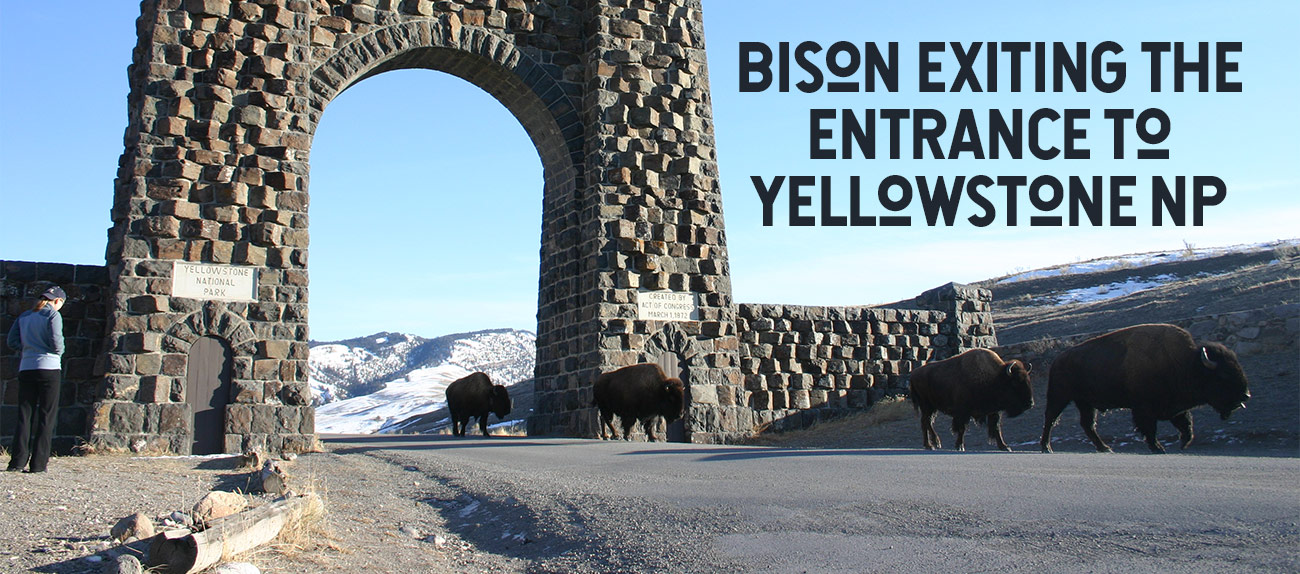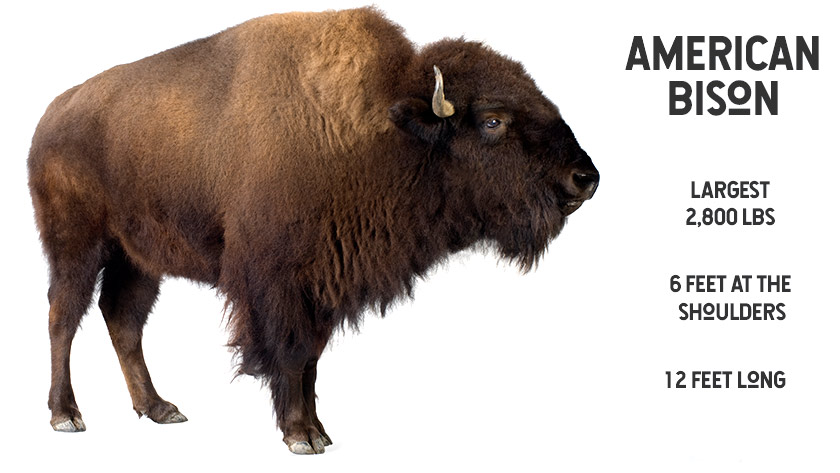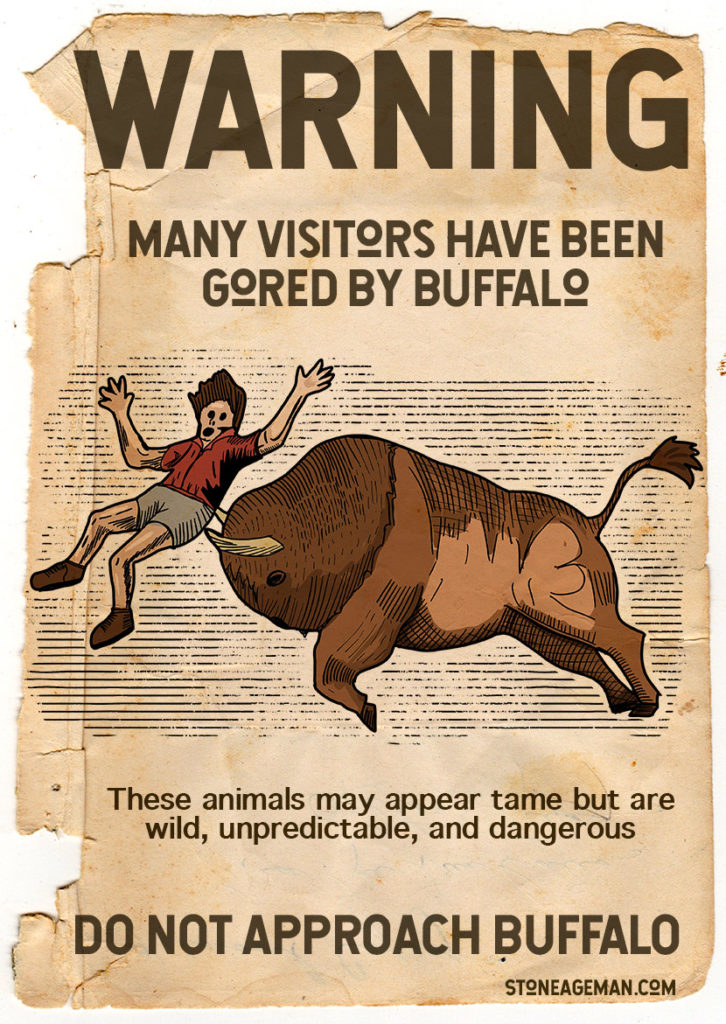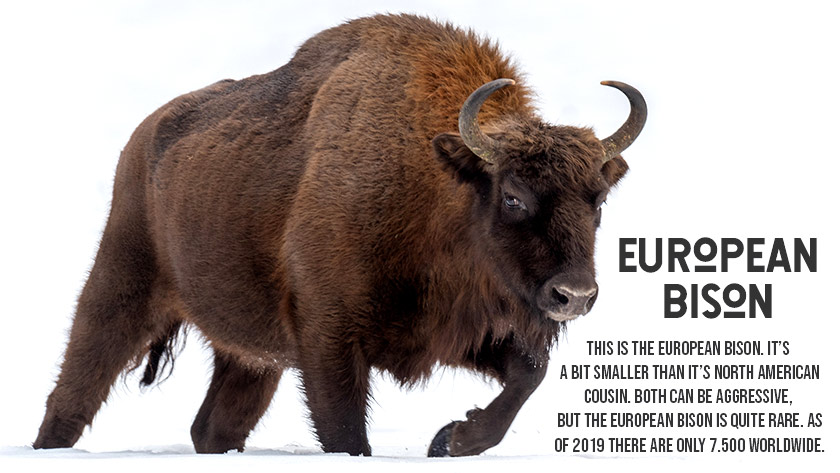What to do if a Bison (Buffalo) Attacks

The American bison is known to attack and gore people who get too close. It happens more often than you’d think. What you do when confronted by one could make all the difference. I’ve outlined here the best advice (according to science) to help keep you from getting killed by a bison.
American Bison Basics
American bison, sometimes called (incorrectly) the buffalo, used to roam North American from coast to coast, grazing throughout the vast temperate grasslands. They are herbivores who got really good at defending themselves from wolves, cougars, sabre tooth cats and (later) American Indians.
Bison were in no way able to adapt to life with firearms. Because of hunting with firearms, fewer than 400 remained at the end of the 19th century! Fortunately, the population has rebounded in many areas and visitors to Yellowstone can view these impressive creatures grazing the landscape. The only time bison seem to take defensive action toward humans is when an uninformed tourist breaks the rules and gets too close. If a person gets hurt or killed by a bison, it is almost certainly because they have made the choice to walk right up to this wild animal.
I think people get lulled into a sense of security with bison because they might think of them like big, furry cows. Let me assure you, they are not. Bison have survived so long on the planet because they are huge, aggressive beasts with giant pointy horns on their head. The largest bull ever recorded weighed 2,800 lbs. They often stand 6 feet high at the shoulders and can reach almost 12 feet long! Their horns are sharp and get to two feet long. They are also surprisingly quick on their feet. An adult bison can run at speeds up to 40 mph.

In many of the places bison have rebounded, they have somewhat habituated to humans and don’t see them as a threat. But that’s not always the case. They have evolved instinctive behaviors to defend themselves and their young from threats like wolves, so one of the most important things you can do is to make sure you don’t resemble a predator and trigger a defensive attack.
Scenarios to Avoid
Here are a few recommendations that can save your life. It may seem like common sense, but these are based on tragic events in documented scenarios.
- Don’t try to take a selfie with a bison behind you.
- Don’t sneak up on a bison. As herbivores, they’re the prey in their habitat and don’t like getting spooked.
- Avoid walking through a giant meadow with a bison herd. It leaves you with no place to hide should they turn on you and stampede.
- Dogs should be leashed. Remember, dogs are basically wolves to a bison – and wolves are their main predator. If a dog starts barking and chasing a bison, it could trigger the defensive behavior that may ultimately get you mixed in.
- Don’t feed a wild bison. That gets you way too close to their horns.
- Don’t get close to a calf. In May and June, cows are super protective of their young.
- Don’t get near an aggressive male. In July and August, bulls are full of testosterone and will charge at just about anything.

The Most Dangerous Bison
The most dangerous bison is one that is displaying warning signs – so let’s go through a few of those. This may take the form of snorting, shaking its head side to side, pawing at the ground, raising its tail or even bluff charging – running or turning quickly toward you as a warning. Think about a bull in a bull-fighting ring – stomping its front hooves, lowering its head, and generally looking mean. If the bison is doing anything that looks like that, you’re in trouble.
But remember, a bison can attack at almost any time. Check out this clip of a 9 year old getting thrown by a bison.
How to Survive a Bison Attack?
Let’s say you’re on a stroll through the prairie in Yellowstone NP or another wilderness with bison and you’ve somehow missed the signs that bison are around. Clearly you wouldn’t have gone up to one to take a selfie, yet now you’re in a predicament. You’re face to face with a big hoofed mammal with horns. What do you do? Here is a decent plan to survive:
- Back away slowly if you can. If you’re in a big field, running isn’t going to help. They can run up to 40mph.
- Find an obstacle – something to put between you and the bison. In other words, you should run to a big boulder, a vehicle, or even a group of trees if possible.
- Get up a tree if there is one nearby – they can’t climb, so you might be safe.
The take home
If you visit somewhere like Yellowstone that has giant herds of bison roaming between cars, don’t be fooled. While you may only see the non-aggressive interactions in a brief time observing them, know that they’re not tame. Bison can quickly see you as a threat and turn on you. Nobody wants to get gored by a horn, and it’s fairly easy to keep that from happening if you give them some space. You have probably noticed a theme emerging – they’re not out to get you.
European Bison SIDE NOTE:
I should note here that I’m talking mainly about the American Bison. There is also a European Bison. The numbers for them are quite small though. It’s estimated that in 2019 there are only 7,500 in the world.

Why I wrote this article
There’s not much that is more iconic of the American West than seeing large herds of bison roaming the prairie, and you can see them for yourself if you visit Yellowstone National Park. As a grad school student in wildlife filmmaking, I lived only 45 minutes from the entrance of the park – and I definitely took advantage of it. Much of my first year was consumed making one film called “Death in Yellowstone.”
What I observed during the filmmaking process was that while more people are fearful of grizzlies, black bears, and mountain lions, it’s bison that are arguably even more dangerous. It’s not because they’re out to get you – but because people seem to have forgotten how formidable these grazing herbivores can be when they’re approached by humans.
Prefer Listening?
If you’d rather listen to this article, I’ve recorded it here to make it as accessible as possible.

